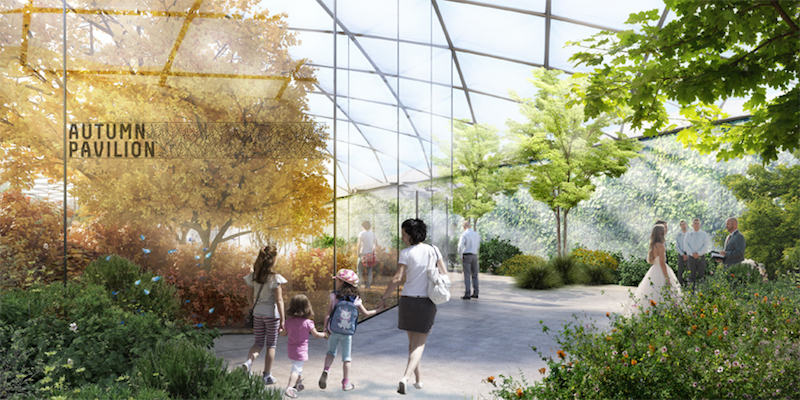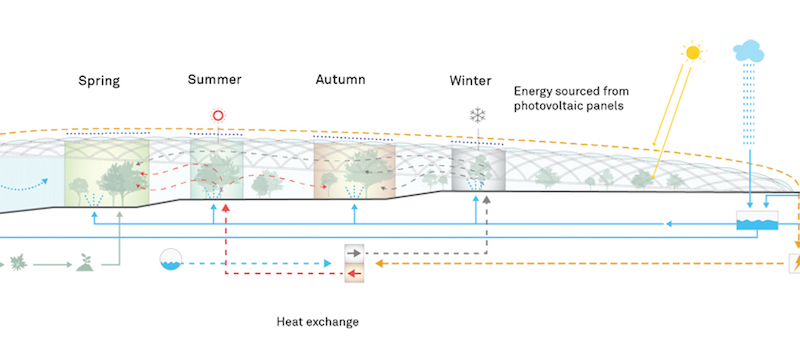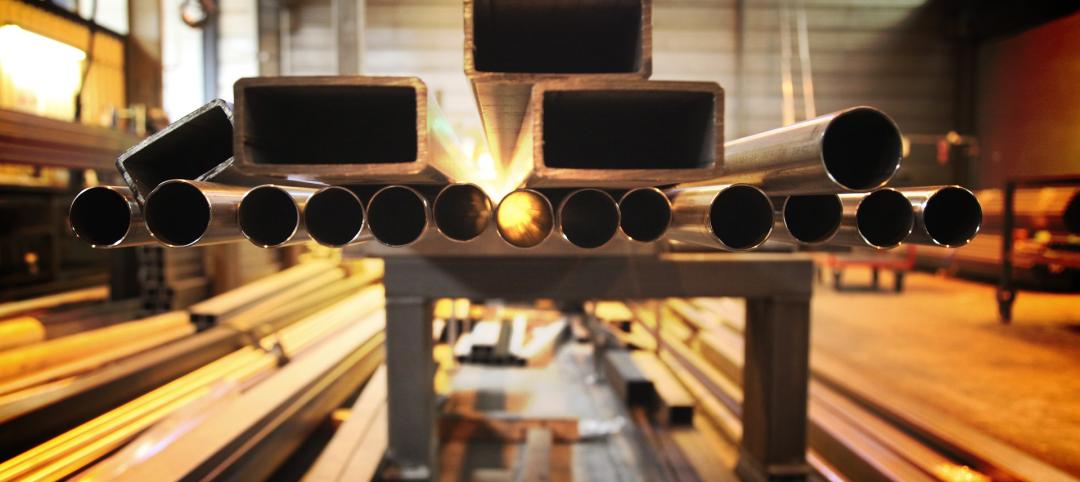Cue the Vivaldi; Carlo Ratti Associati has wild plans for its recently unveiled Garden of the Four Seasons design that will allow visitors to experience all four seasons at once at any point throughout the year.
Commissioned by Citylife, a new neighborhood under development in northwest Milan based on a master plan by Zaha Hadid, Daniel Liebeskind, and Arata Isozaki, Garden of the Four Seasons aims to reclaim a closer relationship between urban dwellers and nature’s cycles, according to Carlo Ratti Associati.
The project is based on a concept by Dr. Barbara Römer, founder of the creative consultancy Studio Römer, and makes use of a new system for high-precision climate control. Incoming solar energy is partially collected through photovoltaics and partially distributed among the different seasonal pavilions (each season will be housed in its own pavilion within the overall garden). All of this is accomplished with net-zero energy consumption.
 Rendering courtesy Carlo Ratti Associati.
Rendering courtesy Carlo Ratti Associati.
A transparent, responsive EFTE membrane is covered with photovoltaic cells to produce clean energy year-round. A heat exchanger takes the captured solar energy and can heat the summer space or cool the winter area. Heat transfer between the pavilions is also possible and allows each one to achieve the desired intermediate environmental conditions.
The EFTE membrane will house hundreds of vegetable species within the garden. Built-in sensors will open and close the membrane for precise regulation of the enclosed environment. Lighting levels and heat, the two main components of plant growth, are closely monitored and regulated, which will allow the plants’ metamorphosis to follow the different seasonal cycles. Additional sensors will measure the quantity of water, temperature, humidity, and nutrients needed by each vegetable species and relay the information as a series of real-time “tweets” coming from the plants about their status.
 Rendering courtesy Carlo Ratti Associati.
Rendering courtesy Carlo Ratti Associati.
Visitors can enter the garden in spring and walk through to winter, observing nature’s transformation along the way. People can dine al fresco during the cold winter months or hold a wedding in the Eternal Spring area.
 Rendering courtesy Carlo Ratti Associati.
Rendering courtesy Carlo Ratti Associati.
The Garden of the Four Seasons will cover over 2500 sm.
Related Stories
Codes | Jul 10, 2023
Water Demand Calculator outperforms traditional plumbing codes for energy, carbon, and water savings
Using IAPMO’s Water Demand Calculator tool can result in energy, carbon, and water savings as compared to using traditional plumbing specification methods in plumbing codes, according to a study by Arup.
Contractors | Jun 30, 2023
Construction industry task force aims for standardized carbon reporting
A newly formed Associated General Contractors of America (AGC) task force on decarbonization and carbon reporting will address the challenges around reporting and reducing carbon emissions in the construction industry.
Apartments | Jun 27, 2023
Dallas high-rise multifamily tower is first in state to receive WELL Gold certification
HALL Arts Residences, 28-story luxury residential high-rise in the Dallas Arts District, recently became the first high-rise multifamily tower in Texas to receive WELL Gold Certification, a designation issued by the International WELL Building Institute. The HKS-designed condominium tower was designed with numerous wellness details.
Green | Jun 26, 2023
Federal government will spend $30 million on novel green building technologies
The U.S. General Services Administration (GSA), and the U.S. Department of Energy (DOE) will invest $30 million from the Inflation Reduction Act to increase the sustainability of federal buildings by testing novel technologies. The vehicle for that effort, the Green Proving Ground (GPG) program, will invest in American-made technologies to help increase federal electric vehicle supply equipment, protect air quality, reduce climate pollution, and enhance building performance.
Industrial Facilities | Jun 20, 2023
A new study presses for measuring embodied carbon in industrial buildings
The embodied carbon (EC) intensity in core and shell industrial buildings in the U.S. averages 23.0 kilograms per sf, according to a recent analysis of 26 whole building life-cycle assessments. That means a 300,000-sf warehouse would emit 6,890 megatons of carbon over its lifespan, or the equivalent of the carbon emitted by 1,530 gas-powered cars driven for one year. Those sobering estimates come from a new benchmark study, “Embodied Carbon U.S. Industrial Real Estate.”
Mechanical Systems | Jun 16, 2023
Cogeneration: An efficient, reliable, sustainable alternative to traditional power generation
Cogeneration is more efficient than traditional power generation, reduces carbon emissions, has high returns on the initial investment, improves reliability, and offers a platform for additional renewable resources and energy storage for a facility. But what is cogeneration? And is it suitable for all facilities?
Multifamily Housing | Jun 15, 2023
Alliance of Pittsburgh building owners slashes carbon emissions by 45%
The Pittsburgh 2030 District, an alliance of property owners in the Pittsburgh area, says that it has reduced carbon emissions by 44.8% below baseline. Begun in 2012 under the guidance of the Green Building Alliance (GBA), the Pittsburgh 2030 District encompasses more than 86 million sf of space within 556 buildings.
Resiliency | Jun 14, 2023
HUD offers $4.8 billion in funding for green and resilient building retrofit projects
The Department of Housing and Urban Development (HUD) recently released guidelines for its Green and Resilient Retrofit Program (GRRP) that has $4.8 billion for funding green projects.
Steel Buildings | May 19, 2023
New manufacturing processes can make steel construction a greener option and add U.S. jobs
“Green steel” that is manufactured using hydrogen generated with renewable energy makes its use as a building material more feasible for environmentally conscious designers and clients. Sustainable manufacturing processes, which are economically viable in the U.S., could also revive steelmaking in the country as the metal becomes more attractive for green building.
Office Buildings | May 15, 2023
Sixteen-story office tower will use 40% less energy than an average NYC office building
This month marks the completion of a new 16-story office tower that is being promoted as New York City’s most sustainable office structure. That boast is backed by an innovative HVAC system that features geothermal wells, dedicated outdoor air system (DOAS) units, radiant heating and cooling, and a sophisticated control system to ensure that the elements work optimally together.

















